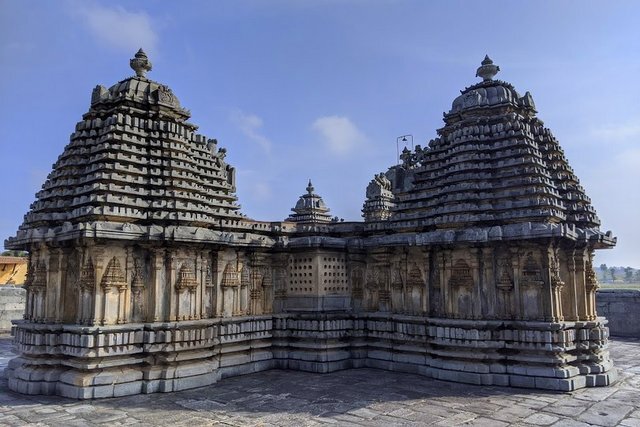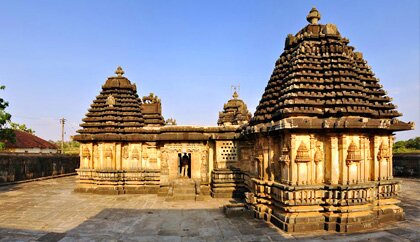Indian Heritage & Culture
Laxmi Devi Temple: Hoysala
- 23 Nov 2020
- 4 min read
Why in News
Recently, a Hoysala-era idol of Goddess Kali of the Lakshmi Devi Temple at Doddagaddavalli, Karnataka has been found damaged.
Key Points
- Lakshmi Devi Temple:
- Lakshmi Devi temple was built by the Hoysalas in the year 1114 CE during the rule of king Vishnuvardhana.
- The building material is Chloritic schist, more commonly known as soapstone.
- The temple does not stand on a jagati (platform), a feature which became popular in later Hoysala temples.
- The temple is a chatuskuta construction (4 shrine and tower). The towers are in Kadamba nagara style. The mantapa is open and square. The reason for the square plan is the presence of shrines on all four sides of the mantapa.
- There is a separate fifth shrine of Bhairava, an avatar of Lord Shiva.
- The main deity is Goddess Lakshmi whereas all Hoysala temples are dedicated to either Lord Vishnu, Lord Shiva and in some cases to Jains.
- An archaeological Survey of India (ASI) monument and is also among the monuments proposed for the UNESCO World Heritage Site.
- Hoysala Temple Architecture:
- It is the building style developed under the rule of the Hoysalas and is mostly concentrated in southern Karnataka.
- Hoysala temples are sometimes called hybrid or vesara as their unique style seems neither completely dravida nor nagara, but somewhere in between.
- They are easily distinguishable from other medieval temples by their highly original star-like ground-plans and a profusion of decorative carvings.
- The temples, instead of consisting of a simple inner chamber with its pillared hall, contain multiple shrines grouped around a central pillared hall and laid out in the shape of an intricately-designed star.
- The most characteristic feature of these temples is that they grow extremely complex with so many projecting angles emerging from the previously straightforward square temple, that the plan of these temples starts looking like a star, and is thus known as a stellate-plan.

- Some of the famous temples are:
- Hoysaleshvara (Lord of the Hoysalas) Temple: At Halebid, Karnataka and built in dark schist stone by a Hoysala king in AD 1150.
- Chennakeshava Temple: At Somnathpur, Karnataka and was built around AD 1268 under Narasimha III.
- Kesava Temple: At Belur, Hassan district of Karnataka built by Vishnuvardhana.
Hoysala
- During the 12th and 13th centuries, Hoysalas of Karnataka grew to prominence in South India and became the most important patrons centred at Mysore.
- They ruled almost all the present day Karnataka.
- Their capital was Belur which was later shifted to Halebidu.
- The period was an important era for the growth of the art, architecture and religion in South India.





